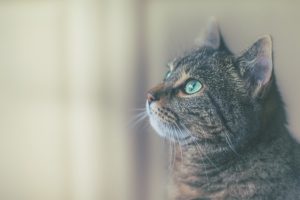
General description
Persian cats are a beautiful, social and harmless pet. It is also called Iranian Cats or Shirizi Cats. The scientific name for this pet is Felis catus. The Persians have a silky shiny coat, a round face, shiny eyes and long hair all over the body. Cats are generally known for their calm and sweet demeanor. Usually they would ask for permission when entering the meeting. Although the root cause of long hair is unknown, scientists have declared it a natural mutation.
Origin
1626 Pietro Della Valle, an Italian national, introduced the long-haired cat for the first time in Europe. It was probably brought to Europe by traders from the Middle East. Initially, these cats were known as Asian cats and were of the same color. Reliable to Persian scientists who have developed their own breed. Now Persian comes in a variety of colors, including duplicates.
Lifetime
The average life expectancy of this cat is fifteen years. More than 76% of cats live to the age of 12 and 52% of cats live to the age of 15 or more. The English Department of Veterinary Medicine has published an average life expectancy of 14-17 years. Persian weight is usually 7 to 12 pounds.
Persian classification
At the beginning of the 17th century, only one species of Persian cat came to the surface, which evolved over time. There are currently more than 100 recognized Persian species, which are further subdivided into the following four main groups:
1. Group 1. The first group of cats have monochrome hair. Their hair is uniform in color from tip to root.
2. Group 2. The second group of Persian cats have an inhibitory gene.
3. Group 3. The third group of cats carry the Himalayan gene.
4. Group 4. The fourth and last cats in the group carry the agouti gene.
A species of Persian cat
There are several differences in the classification of Persians among various international cat associations. All associations have their own views on origin, attributes and classification. However, there are three main types of Persian cats, namely Himalayan, Exotic and Persian cats. Some scientists have also told of the following species:
• Himalayan.
• Exotic.
• Persians and Angora.
• Traditional Persians.
• Face-to-face and particularly typical.
• Toy and teapot sizes.
• Chinchilla longhair and porcupine.
• Color.
Persian food
Persian cat belongs to Mammalia class and carnivorous. She feeds the kittens with milk. The Persians cannot survive without consuming meat. Goat milk, pumpkin, fish and vitamins are the best food for Persians. Cats should never be given alcohol or alcoholic beverages, sugar or onions as this can cause them serious health problems.
Persian diseases
Persians most often suffer from the following diseases:
1. Breathing difficulties / problems.
2. Dental problems
3. Kidney disease
4. Skin problems
5. Excessive tearing
6. Eye diseases
7. Fungal infection
Care and maintenance
The department explained the cause of the death of Persian cats. They are of the opinion that the Persians have a large round skull, shortened face and nose which makes breathing difficult. Facial structure usually makes cats difficult to breathe. In addition, Persians have long hair that needs regular care and care to keep them from rugs. They should be thoroughly bathed and dried daily. Their eyes can be cleaned regularly to prevent eye disease.
Personality and behavior
The Persian cat is a beautiful, calm, sweet and gentle pet. She likes the company of peaceful people. Persian cats are calm but have a playful side. Cats have a strong aversion to dogs.
Pre-purchase measures
These important pre-purchase tools include:
1. The cost of a cat.
2. Persian color combination.
3. Maintain a good relationship with breeders.
4. Visit CFA Cat Show.
5. CFA Registered Breed.
6. Be prepared to bathe and brush every day.
7. Choosing between a cat with a flat or traditional face.
Keeping a cat in Islam
Islam is a complete religion and a way of life where everything is clear. The Islamic tradition and society have given respect to cats for their cleanliness. Islam allowed cats to enter Muslim homes, mosques and even Masjid al-Haram. Islam allowed Muslims to keep cats unharmed or unclean at home (Najas). Cats are useful pets because they eat snakes, rats and other harmful bugs. The great Sachabi Abu Hurayrah (the father of a kitten) was called for his love of cats.
